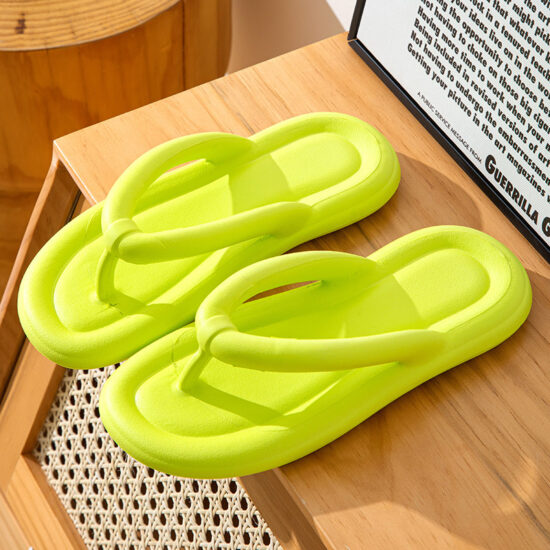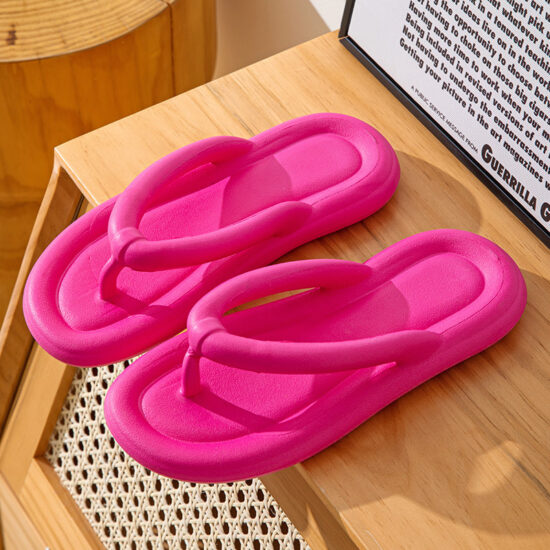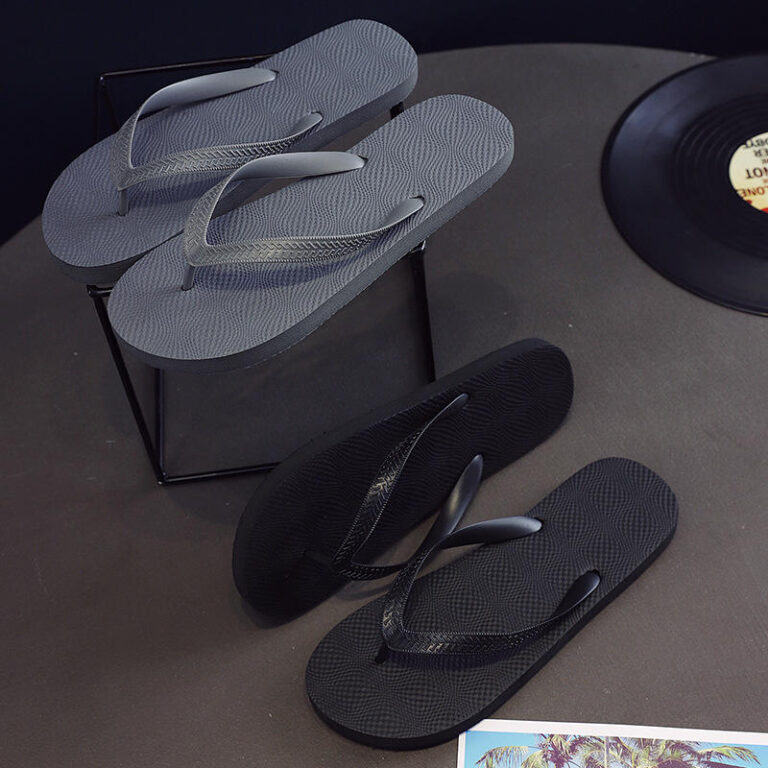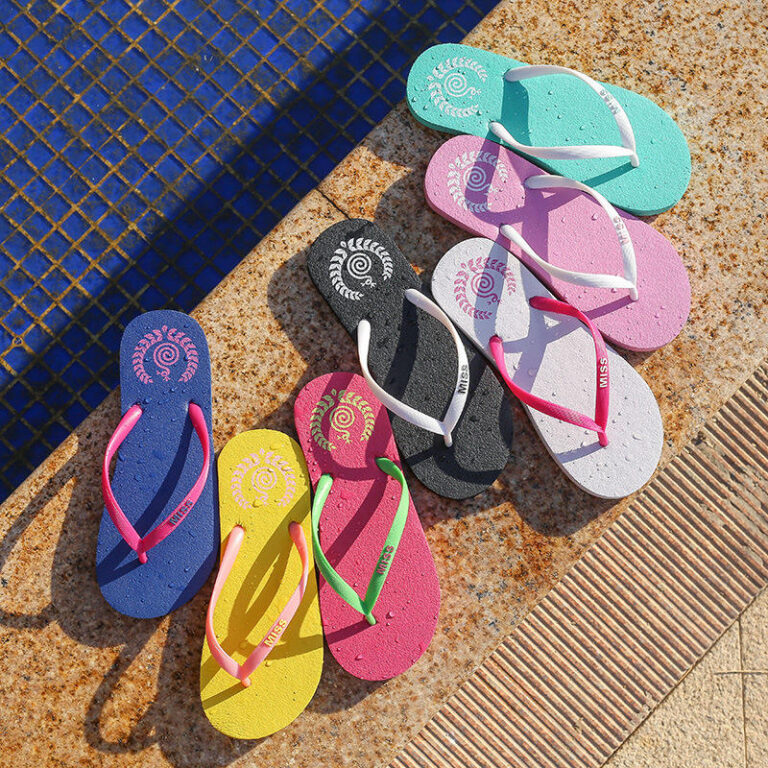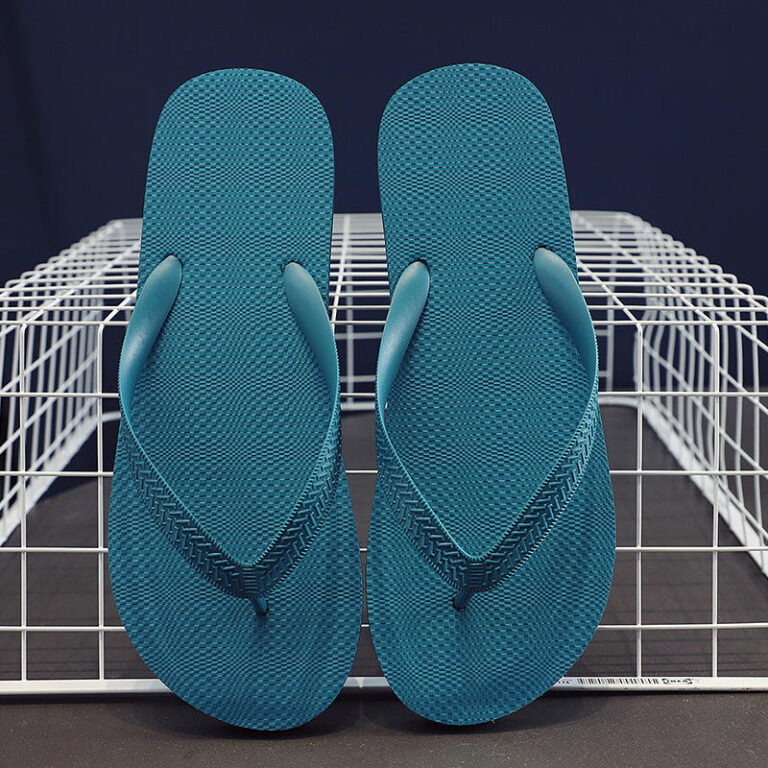jay@nbdho.com
Top Materials Used in High-Quality Flip Flops
Choosing the right pair of flip flops involves more than just picking a design you like. The materials used in construction play a major role in determining the comfort, durability, and overall performance of the flip flops. In recent years, advancements in material science and sustainability have expanded the range of options available. Whether you’re a buyer sourcing wholesale flip flops or a consumer investing in quality footwear, understanding material differences can help guide your decision.
1. EVA (Ethylene-Vinyl Acetate):
One of the most popular materials in flip flop production, EVA is known for its lightweight, shock-absorbing qualities. It provides excellent cushioning and flexibility, making it a top choice for comfort-focused flip flops. EVA is water-resistant, easy to clean, and ideal for beach, pool, and everyday casual use.
2. Rubber:
Natural or synthetic rubber offers durability and slip resistance. Flip flops with rubber soles tend to have better grip, making them suitable for both wet and dry environments. They’re also resilient to wear and tear, often lasting longer than foam-based models. Recycled rubber options are also available for environmentally conscious consumers.
3. PU (Polyurethane):
Polyurethane is a slightly denser and more durable material compared to EVA. It’s commonly used in flip flops that require enhanced support or stylish molded designs. PU soles are often found in mid-range and premium products, particularly where long-term comfort is important.
4. Leather:
Leather flip flops are a premium option for fashion-conscious users. Full-grain or top-grain leather provides a sleek look and naturally molds to the shape of the foot over time. While leather is not ideal for water use, it’s perfect for urban wear or semi-casual occasions. Many luxury flip flops use leather for their straps, footbeds, or lining.
5. Recycled and Eco-Friendly Materials:
With sustainability taking center stage, many brands are using recycled plastics, bio-based foams, and natural fibers in their flip flop construction. Algae-based EVA, organic cotton straps, and cork footbeds are just some of the innovations gaining popularity. These options reduce environmental impact while maintaining style and comfort.
6. Fabric/Textile Uppers:
Soft fabric or woven textile straps offer breathability and reduce friction. Often padded or lined for extra comfort, these straps are common in casual and sport flip flops. They’re especially suited for warm climates where ventilation matters.
Ultimately, the material you choose should depend on your primary use. Beach-goers may prefer EVA or rubber, while those wearing flip flops in city settings might opt for PU or leather. For the environmentally minded, recycled or natural materials offer the best of both worlds.
By paying attention to materials, you not only ensure the longevity of your flip flops but also enhance your overall wearing experience.
